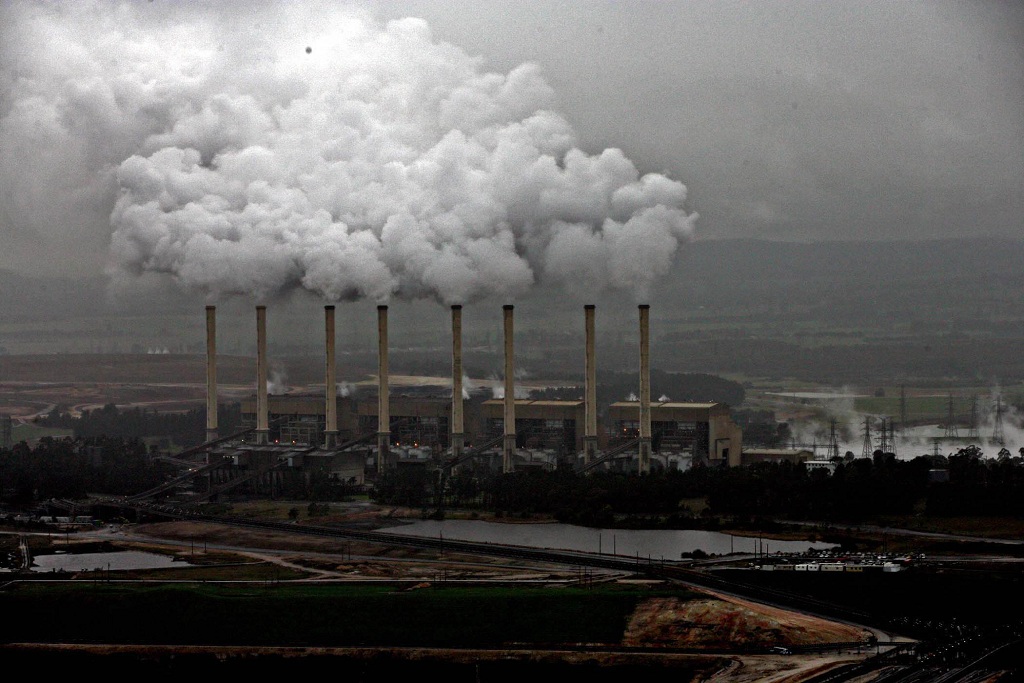The Government Is Spending Millions Of Dollars On A New Gas Plant, Which We Don’t Need
The government has announced plans to spend hundreds of millions of dollars on a new gas-fired power station in the Hunter Valley but energy experts are pointing out that the injection of taxpayer’s cash doesn’t make sense from any angle.

The government has announced plans to spend hundreds of millions of dollars on a new gas-fired power station in the Hunter Valley but energy experts are pointing out that the injection of taxpayer’s cash doesn’t make sense from any angle.
The government has made good on their promise (or threat, depending on how you look at it) to fill a supposed gap in Australia’s electricity market left by the Liddell coal plant, which is due to close in 2023.
In May, the government confirmed it would spend $600 million to build the new gas-fired power station in Kurri Kurri, claiming that investing in the plant will keep energy prices down for people who live in NSW.
What do we need to know about the ‘gas-led recovery’?
Morrison’s investment in his ‘gas-led recovery’ has clearly been highly controversial since it was announced towards the end of last year.
There are obvious reasons why the Prime Minister’s plan has led to some massive backlash over the past six months. Environmental organisations and activists are beyond frustrated that the federal government has chosen to ignore calls for investment in renewable energy and instead turned their sights to another fossil fuel.
Opponents have argued that gas isn’t a sustainable resource and this significant investment in another fossil fuel is only going to add to global climate change challenges.
“Best case scenario: this investment wastes $600 million of taxpayer’s funds,” Baxter said.
While gas releases about half the emissions that coal does when burned, it can contribute even more to global warming due methane leaks during extraction.
Methane is an extremely potent greenhouse gas that has a global warming potential up to 84 times greater than carbon dioxide in its first two decades in the atmosphere.
Despite warnings about how an investment in gas will only serve to increase Australia’s emissions, Morrison has remained steadfast and said that Australia is still committed to the climate change commitments outlined by the Paris Agreement, which he said the country will meet “in a canter”.
Spoiler alert: this is not on track to happen.
The announcement of the government’s investment also came in the same week as a new road map published by the International Energy Agency that said to meet 2050 targets of net zero emissions, governments needed to stop investing in new coal mines, oil, and gas wells.
But it’s not just about the environment.
Even besides the environmental concerns associated with Morrison’s gas plans in the Hunter, it’s worth inspecting why this plan fails to stack up in economic and energy terms.
Tim Baxter, the senior researcher for climate solutions at the Climate Council told Junkee that the Kurri Kurri gas-fired power station is not going to drive down electricity prices, despite the government’s stated aims.
“Best case scenario: this investment wastes $600 million of taxpayer’s funds,” Baxter said.
“We’ve known for some time that the cheapest way to develop Australia’s grid is with zero-emissions solutions…by definition, a plant that is the most expensive for of generation can’t lower prices and that’s why so many experts are raising eyebrows at this particular plan.”
Cheaper and cleaner energy alternatives are also already flooding the market and energy experts are concerned that the Kurri Kurri plant will quickly become a stranded asset.
Experts are also just calling it ‘unnecessary’.
The government are arguing that there will be this gap in the grid left by the Liddell coal plant but experts say that gap doesn’t really exist and it’s not necessary to replace it.
Professor Kenneth Baldwin, director of the ANU Energy Change Institute, told Junkee that Kurri Kurri could fill the niche when solar and wind output is low but “even then, it’s unnecessary under the current circumstances, given that we’re not at the moment or in the foreseeable future, looking like needing to use the existing gas peaking plant available.”
There are “a lot of face palm moments in watching energy and climate politics” and this announcement was just another one.
For some context, there are already gas-fired power plants owned by Snowy Hydro but those plants are only turned on when the price of electricity is already high enough to justify the use of a gas peaking plant.
It’s expected that the new Kurri Kurri plant will only run at about 2% of its capacity, or one week per year.
Baxter said that while there are questions around the stability of the grid in the future, intelligent planning of transmission, battery capacity and hydro capacity are what’s needed to shore up the grid whilst lowering costs.
The investment could also have long-term ramifications for the energy market in general.
This $600 million investment only adds to the uncertainty of the current energy market.
Climate policy in Australia, if you hadn’t already noticed, has very little stability and this new investment will only add even more uncertainty, which could affect how clean energy projects are established in the coming years.
“The future investments that are needed in the energy transition will be affected because this [$600 million investment] increases the risk to future projects as a result of the unpredictability of future possible government interventions,” he said.
Baxter said that, working in his field, there are “a lot of face palm moments in watching energy and climate politics” and this announcement was just another one.